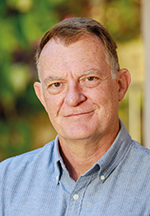

July has been a slightly more positive time for businesses in South Africa and for engineers and technicians in the electronic engineering and manufacturing sector. The newly announced Section 12B tax incentive will allow businesses, individuals or trusts who pay tax, to claim a 125% deduction in the first year for all renewable energy projects. This is without a threshold on generation capacity.
After speaking to many individuals, this has ignited a fair amount of hope in the energy sector. The hope is that this incentive will lead to large-scale solar installations, thereby removing some of the current load from our tired grid and generation fleet. One can hope, can’t we? The question must be asked, however: Why did it take the government so long to issue this incentive, when the writing has been on the walls for the past ten years or more.
Why not DIY?
Having a vested interest in the education sector in South Africa, I am always interested in getting involved with the maker community. These communities are usually a melting pot of weird ideas and amazing contraptions, some of them built just for the heck of it.
There is one thing that I love about the maker community and DIY clan, especially when it comes to the younger generation; they simply do not have the experience yet to know their limitations or the limitations of the equipment they are working with. They have no idea what will work and what will not, and therefore, they are not afraid to try things.
Do they always get it right? Definitely not. I have seen some catastrophic results of projects doing nothing when powered on, projects blowing up when powered on, and even one that burst into flames shortly after being powered on, much to the initial horror of the young man who had built it. This horror, however, rapidly turned to laughter at the site of the slowly spinning car on fire.
And this is what the maker community is all about; trying things to see what works and having a chuckle at the failures, knowing that the learning experience has still benefitted from these failures.
Many of our readers are professionals in the electronic engineering sector, but I could almost bet my last rand that not one of them has never made a mistake. Making mistakes is human and inevitable, and learning from them is an important lesson.
On putting together this issue’s spotlight feature, I started to research the new systems and components available from the various retailers specialising in supplying the maker community. I was intrigued by how much the devices have improved. No longer do tinkerers and makers need to settle for 8-bit microcontrollers with only a handful of I/O to play with. The latest available SoCs feature modern 32-bit microcontrollers sporting Wi-Fi and Bluetooth connectivity and interfaces for both analogue and digital signals.
Even the ubiquitous Arduino Uno has seen a drastic leap forward with the new revision 4 (Uno R4) recently announced. With a modern 32-bit processor and sporting Espressif’s ESP32-S3 for Wi-Fi connectivity, this board now has the smarts to accomplish almost any task thrown at it. The best feature, however, is that even though the device has seen this dramatic improvement, the same form factor has been kept, allowing it to be used with the thousands of plug-in boards already designed for this ecosystem.
It’s an exciting time to be a member of the maker community. I wish I had more time to just sit and tinker again!
| Tel: | +27 11 543 5800 |
| Email: | [email protected] |
| www: | www.technews.co.za |
| Articles: | More information and articles about Technews Publishing |

© Technews Publishing (Pty) Ltd | All Rights Reserved